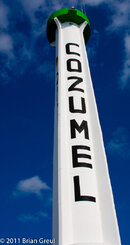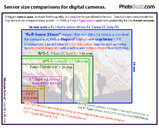If those are the kind of shots you like, in ambient light, and using them as screen savers is a target, you'll do just fine with a point-and-shoot. The DSLR is massive overkill. An Olympus TG-6 will do fine for you, and let your do real macro if you want. I have no idea what "large macro" is that you say you like, unless you are using that unusual term to mean "not reef-scape wide-angle shots."
You are using an out of date browser. It may not display this or other websites correctly.
You should upgrade or use an alternative browser.
You should upgrade or use an alternative browser.
Let's chat about DSLR vs Point and Shoot - looking for some wisdom / experience
- Thread starter nanohawk
- Start date
Please register or login
Welcome to ScubaBoard, the world's largest scuba diving community. Registration is not required to read the forums, but we encourage you to join. Joining has its benefits and enables you to participate in the discussions.
Benefits of registering include
- Ability to post and comment on topics and discussions.
- A Free photo gallery to share your dive photos with the world.
- You can make this box go away
Using some of my favorite photos as screensavers is just what I have done with some of my photography. It happens to be a great example of what I like. You can take great photos with crap cameras. Ansel Adams worked with a pinhole camera that we would all sneer at today. Better gear makes it easier to capture better photos.If those are the kind of shots you like, in ambient light, and using them as screen savers is a target, you'll do just fine with a point-and-shoot. The DSLR is massive overkill. An Olympus TG-6 will do fine for you, and let your do real macro if you want. I have no idea what "large macro" is that you say you like, unless you are using that unusual term to mean "not reef-scape wide-angle shots."
On land I tend to do more macro stuff. The non-macro is shown for perspective. I find the small world in macro to be interesting. I have an MP-E65 1-5x Macro lens.... which is often aggravating to use but opens up new worlds bordering on microscopy. The photos below were taken handheld with a zoom lens that can do Macro but is not one of my favorite lens.
When I am doing non-macro stuff it tends to be less of what I see as traditional photography. The only constant in my photography is I enjoy capturing perspectives that are in plain site, but most people don't see.
These were all taken with a canon DSLR. I would have to look at the exif data to tell you if it was my 40D or 5D MkII. I would guess the first 3 were my 40D and the Cozumel shot was the 5DMKii.
When I say "large macro" I am referring to things you can see with your eye as opposed to things that you really need magnification to see. The first photo below is what I would call true macro. Most people would never see the little bugs inside the flower or the grains of pollen without magnification. The 3rd photo is large-macro... you could see it, but the detail would elude you with the naked eye.
Attachments
Honestly, you are spending more time talking (especially about land photography) than listening.
I get it; you are a great land photographer. that is hardly relevant underwater, and you've asked for input.
Your illustrative examples of the difference between macro and large macro don't help me; perhaps the photos are posted in the wrong order? Macro has a clearly defined meaning in photography, and it is not really related to what you what you can see with your naked eye, but rather to the reproduction ratio between toe original and the image on your sensor.
I get it; you are a great land photographer. that is hardly relevant underwater, and you've asked for input.
Your illustrative examples of the difference between macro and large macro don't help me; perhaps the photos are posted in the wrong order? Macro has a clearly defined meaning in photography, and it is not really related to what you what you can see with your naked eye, but rather to the reproduction ratio between toe original and the image on your sensor.
Doctorfish
Contributor
For natural light photography in shallow water including macro. I would not waste my money on a DSLR setup, even if you already have a camera and lens. Adding a tray, strobe, housing, arms etc is still a considerable cost even if buying used. A used housing will probably require a trip to the factory or a dealer like Backscatter for o-ring change, lubrication and pressure testing if you don't want leakage. Further, weight in and out of the water is an issue as is packing for travel.
I have a Nikon DSLR and Aquatica housing that has not seen the light of day for several years and I now use an Olympus Pen E PL-10 in an AOI plastic housing. It's a bit of a compromise but much smaller and lighter.
But it's still a PITA to travel with.
I think Tersiops has a good suggestion for you. The Olympus TG 6 is very small, light, easy to use and takes great macro with very good image quality. When you flood it ( and you will eventually ) replacement cost won't kill you.
I have a Nikon DSLR and Aquatica housing that has not seen the light of day for several years and I now use an Olympus Pen E PL-10 in an AOI plastic housing. It's a bit of a compromise but much smaller and lighter.
But it's still a PITA to travel with.
I think Tersiops has a good suggestion for you. The Olympus TG 6 is very small, light, easy to use and takes great macro with very good image quality. When you flood it ( and you will eventually ) replacement cost won't kill you.
deeper thoughts
Contributor
- Messages
- 7,009
- Reaction score
- 3,034
- # of dives
- 500 - 999
great thread
Clearly you are intent on lecturing. Thanks for your input, but no thanks.Honestly, you are spending more time talking (especially about land photography) than listening.
I get it; you are a great land photographer. that is hardly relevant underwater, and you've asked for input.
Your illustrative examples of the difference between macro and large macro don't help me; perhaps the photos are posted in the wrong order? Macro has a clearly defined meaning in photography, and it is not really related to what you what you can see with your naked eye, but rather to the reproduction ratio between toe original and the image on your sensor.
Perhaps you would benefit from reading my questions and then seeing how your answers remotely fit into what I asked.
Photography is capturing the light to recreate an image. Whether it is done in space, underwater or on land is irrelevant.
tursiops is busy attacking my photography and posts.... his judgemental advice is not helpful or welcomeFor natural light photography in shallow water including macro. I would not waste my money on a DSLR setup, even if you already have a camera and lens. Adding a tray, strobe, housing, arms etc is still a considerable cost even if buying used. A used housing will probably require a trip to the factory or a dealer like Backscatter for o-ring change, lubrication and pressure testing if you don't want leakage. Further, weight in and out of the water is an issue as is packing for travel.
I have a Nikon DSLR and Aquatica housing that has not seen the light of day for several years and I now use an Olympus Pen E PL-10 in an AOI plastic housing. It's a bit of a compromise but much smaller and lighter.
But it's still a PITA to travel with.
I think Tersiops has a good suggestion for you. The Olympus TG 6 is very small, light, easy to use and takes great macro with very good image quality. When you flood it ( and you will eventually ) replacement cost won't kill you.
I'm pretty happy with Canon equipment. That is why I posted in the Canon sub-forum. I'm also accustomed to how Canon gear works after using it for over a decade.
I did not start this thread to debate about what kind of photos I like or what brand of camera I should use. This is really a contest between settling for a G7Mk3 or investing in a housing for a DSLR and probably investing a little more in a better camera that could live in the housing for a longer period of time.
The middle ground might be adding a dome to Ikelite's housing for the G7Mk3 and seeing if that gets better results for me. Ikelite's housings have been very reilable for me with maintenance. I'd still add the vacuum port and system for the additional benefits it offers.
I agree on the hassle of yet another bag and entry/exit, etc. However, the reality is the additional baggage fees are miniscule compared to the cost of a dive trip. It's sort of like going on a cruise and skipping a premium on-board restaurant because it's over-priced. The nominal extra cost isn't all that important. If you can afford it and you want to do it, then do it.
There are some very good points made about the overall adequacy of a 1" sensor camera for the average diver.
I've always subscribed to the practice that the housing needs to go back for overhaul periodically. That's worked well for me. I have been rather unimpressed with most of the LDS when it comes to photography. They are usually run by thrill-seekers who are on the opposite end of the spectrum from me as a photographer.
However, it's a fallacy to compare a point and shoot with a 1 inch sensor to a full frame sensor and it's much larger much higher quality optics. The chart below is worth a look.
Attachments
Manneca
Contributor
- Messages
- 241
- Reaction score
- 105
- # of dives
- 1000 - 2499
The middle ground between P&S and DSLR are MFTs. I use an Olympus MFT and get very good pictures. I photograph mostly nudibranchs and use a 60 mm micro lens. Sony and some of the other mirrorless full frames have small cameras, but the lenses are huge. MFT lenses are small. I can get all my camera gear in a small carry on bag that fits even the smallest plane (and it doesn't look heavy so I can usually avoid the weighing nightmare for carry ons). OM (Olympus successor) just announced a new MFT that looks really good. I've been waiting to upgrade until they announced a new camera. I'm also planning a nauticam housing with a vacuum lock, although I haven't had issues with flooding for years.
I think a friend of mine shoots Lumix MFT. His work is really stellar and something I admire. He likes Nudibranchs as well. I'm not sure I want to go down that road yet for the MFTs.The middle ground between P&S and DSLR are MFTs. I use an Olympus MFT and get very good pictures. I photograph mostly nudibranchs and use a 60 mm micro lens. Sony and some of the other mirrorless full frames have small cameras, but the lenses are huge. MFT lenses are small. I can get all my camera gear in a small carry on bag that fits even the smallest plane (and it doesn't look heavy so I can usually avoid the weighing nightmare for carry ons). OM (Olympus successor) just announced a new MFT that looks really good. I've been waiting to upgrade until they announced a new camera. I'm also planning a nauticam housing with a vacuum lock, although I haven't had issues with flooding for years.
I think I could get some of what I want out of a G7Mk3. It's affordable for one and portable / easy to manage for another.
I do appreciate you bringing the MFT option up. If I wasn't already invested in lenses it might be a consideration.
I started with a Nikonis II; worked my way up to film SLR's (Canon) and DSLR's (Canon) in Ikelite housings with Ikelite strobes. I had a very similar experience to @MaxBottomtime ; I took advice from someone about not leaving my housing all closed up from prep the night before, and jumped in the water in Belize without clamping it down. Hard to describe what a bummer that was. The liveaboard loaned me a P&S (TG5) and I surprised myself by not being really too disappointed in the results. For the last couple of years I have been using a TG6 as a travel camera rig, and I've been overall OK with the results. I do use the strobes (you can use RC optical from the TG-6 to trigger Ikelite DS strobes (with some extra optical slave receiver-to-TTL adapters on each strobe)).
Having that background, I very recently decided to not carry the bigger DSLR rig anymore and I have acquired a Sony RX100vii and an inexpensive (Fantasea) housing. If I continue to get good results I will likely look at the Nautica housing, even possibly use the external HDMI for a larger UW monitor (see deteriorating eyesight in the next paragraph).
I switched for two reasons. I want my home UW camera setup and my travel UW camera setup to be the same. I understand a bigger rig can go in a Pelican case and I admire Max's photos but for me I'm now trying to keep the weight and cube down. And my age and deteriorating eyesight even when corrected and even when wearing a Rx mask has driven me to two rules (one of which I have known from the beginning): carry a lot of light, and the new rule: get a camera with a fast, accurate, tracking AF. The Sony RX100vii has fast phase-detect tracking AF (software apparently brought to the little camera from the latest Sony A9 sports configuration).
Having that background, I very recently decided to not carry the bigger DSLR rig anymore and I have acquired a Sony RX100vii and an inexpensive (Fantasea) housing. If I continue to get good results I will likely look at the Nautica housing, even possibly use the external HDMI for a larger UW monitor (see deteriorating eyesight in the next paragraph).
I switched for two reasons. I want my home UW camera setup and my travel UW camera setup to be the same. I understand a bigger rig can go in a Pelican case and I admire Max's photos but for me I'm now trying to keep the weight and cube down. And my age and deteriorating eyesight even when corrected and even when wearing a Rx mask has driven me to two rules (one of which I have known from the beginning): carry a lot of light, and the new rule: get a camera with a fast, accurate, tracking AF. The Sony RX100vii has fast phase-detect tracking AF (software apparently brought to the little camera from the latest Sony A9 sports configuration).
Similar threads
- Replies
- 0
- Views
- 169
- Replies
- 28
- Views
- 1,280
- Replies
- 4
- Views
- 491








